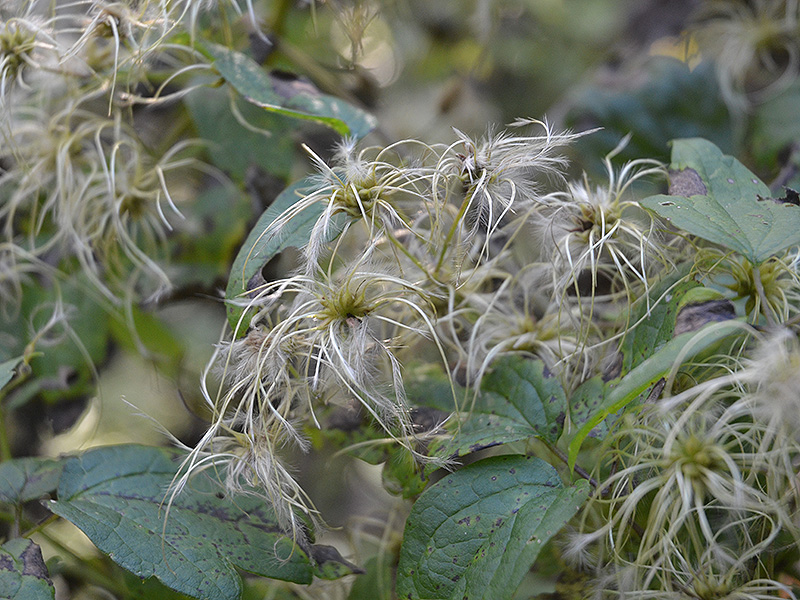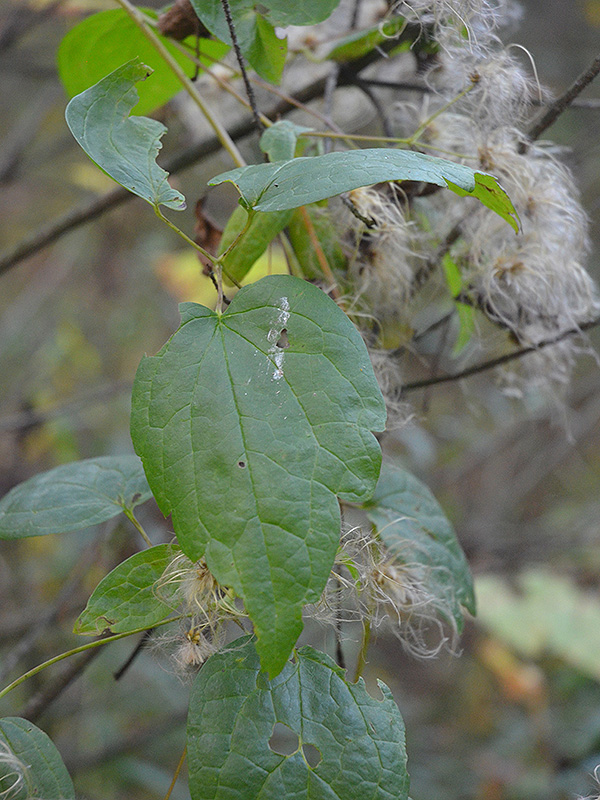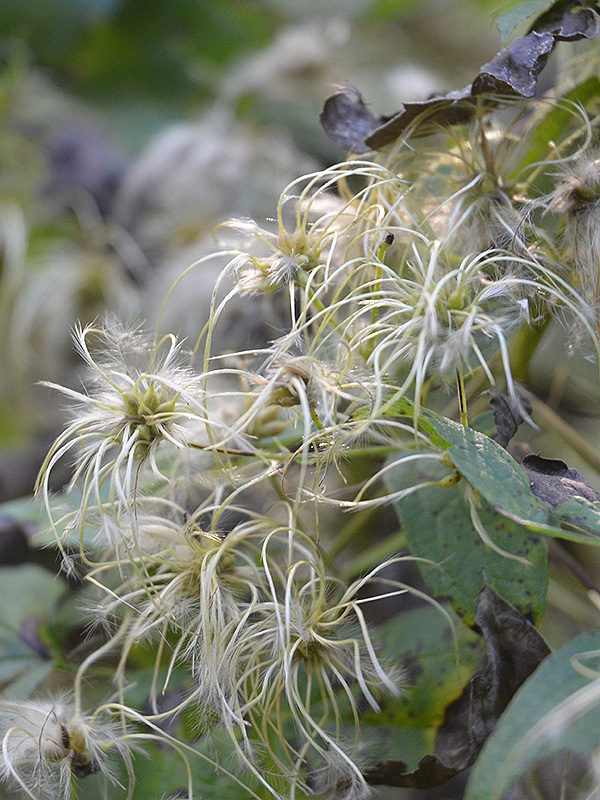| General Description | This self-seeding vine produces white flowers in the late summer months. It spreads vigorously and prefers sunny areas but will tolerate partially shade as well. |
| Shape | Climber. |
| Landscape | Works well along fences, trellises or arbours where it can climb and be supported. |
| Pests | Clematis wilt is caused by the fungus Phoma clematidina with the symptoms evident through wilting leaves, leaf stalks turning black and then with the stems starting to quickly wilt. There are no chemical controls available to treat Clematis Wilt. If an infection is apparent, cut the wilted stems back to the healthy tissue. Tools used should be disinfected thoroughly and removed infected tissue should be destroyed to prevent any further soil or plant infection. |
| Notable Specimens | Joany’s Woods, West Williams, Middlesex County, Ontario, Canada. |
| Habitat | Low woodland areas and thickets along streams and ponds. |
| Leaf Description | Leaves are trifoliate (rarely 5-foliate), leaflets ovate to lanceolate, 3.5-9 x 1.5-7.5 cm. |
| Flower Description | Flowers have narrow long petals and are white in colour. |


